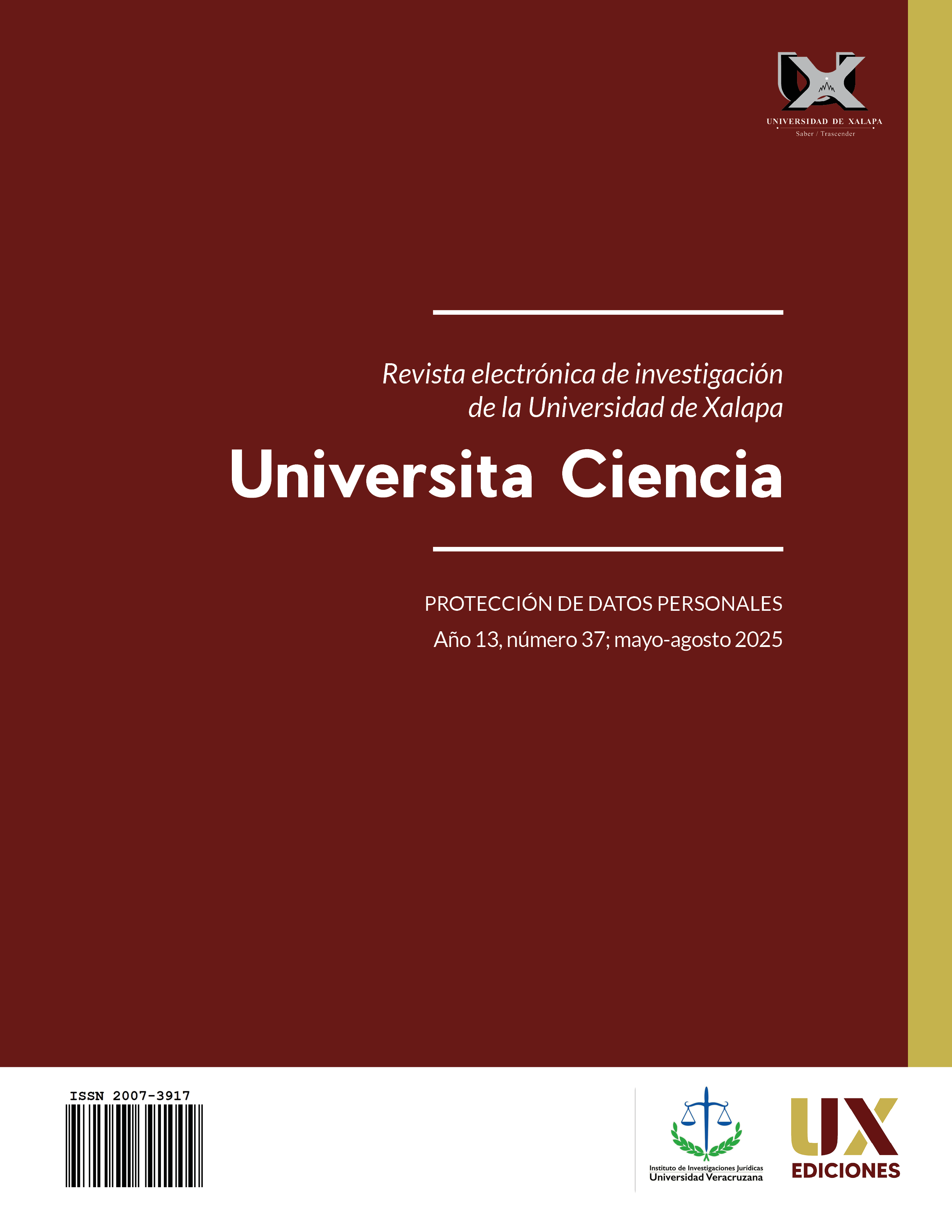La Influencia de China en África: la Iniciativa de la Franja y la Ruta
DOI:
https://doi.org/10.5281/zenodo.16423428Palabras clave:
IFR, Africa, China, Política ExteriorResumen
La Iniciativa de la Franja y la Ruta (IFR) es un proyecto de infraestructura global chino que busca revitalizar la antigua Ruta de la Seda. En África, la IFR ha financiado proyectos en sectores como energía, telecomunicaciones y transporte, con el objetivo de aumentar la conectividad regional y la integración económica; sin embargo, la creciente influencia de China en África ha generado preocupaciones sobre la sostenibilidad de la deuda y la dependencia económica de China. Este artículo analiza la influencia de la IFR en África, abarcando sus avances, las relaciones económicas sino-africanas y sus implicaciones multifacéticas. Para ello se utilizó una metodología cualitativa que permitió la revisión de evidencia empírica de los textos más relevantes sobre el tema, y así examinar el progreso de la IFR en el continente africano, así como las relaciones e interacciones entre China y África, y las implicaciones de estas relaciones. Se concluye que la IFR ha dejado una huella considerable en las interacciones entre China y África. A pesar de haber propiciado ventajas económicas y sociales, es imperativo enfrentar los obstáculos con el fin de garantizar un progreso sostenible e integrador en el continente. Se hace necesario promover una mayor transparencia, involucramiento de las comunidades locales y una gestión responsable de la deuda, con el objetivo de maximizar los beneficios de la iniciativa y mitigar posibles riesgos.
Métricas
Citas
AidData. (2024). Project ID: 59375. China Eximbank provides $344.4 million preferential buyer’s credit for Phase 1 of Doraleh Multipurpose Port and the Damerjog Livestock Export Terminal Project (Linked to Project ID#91872). https://china.aiddata.org/projects/59375/
Alden, C. y Jiang, L. (2019). Brave new world: Debt, industrialization and security in China–Africa relations. International Affairs, 95(3), 641-657.
Ayodele, T. y Sotola, O. (2014). China in Africa: An evaluation of Chinese investment (Working Paper Series, pp. 1–20). Initiative for Public Policy Analysis.
Banco Mundial. (2024). China. Databank. https://datos.bancomundial.org/pais/china?view=chart
Brosig, M. (2021). A role model for Africa or exceptional engagement? Assessing China's South Sudan experience. En S. Zhao (Ed.), China’s big power ambition under Xi Jinping (pp. 256–270). Routledge. https://doi.org/10.4324/9781003198871
Cabestan, J. P. (2021). China's military base in Djibouti: A microcosm of China's growing competition with the United States and new bipolarity. En S. Zhao (Ed.), China’s big power ambition under Xi Jinping (pp. 169–185). Routledge. https://doi.org/10.4324/9781003198871
Chang, Y. (2019). Understanding the Belt and Road Initiative (BRI): An initiative to make China great again? European Journal of East Asian Studies, 18(1), 7–35.
Chen, L. (2023). China’s special economic zones and the industrialisation of Africa. Journal of Sino-African Studies, 2(1), 1–20.
Deych, T. (2019). China in Africa: A case of neo-colonialism or a win-win strategy? Outlines of Global Transformations: Politics, Economics, Law, 62–82. https://doi.org/10.23932/2542-0240-2018-11-5-119-141
Dutton, P., Kardon, I. y Kennedy, C. (2020). Djibouti: China's first overseas strategic strongpoint. China Maritime Studies Institute, US Naval War College. https://digital-commons.usnwc.edu/cgi/viewcontent.cgi?article=1005&context=cmsi-maritime-reports
Ehizuelen, M. (2017). More African countries on the route: The positive and negative impacts of the Belt and Road Initiative. Transnational Corporations Review, 9(4), 341–359.
Fijalkowski, L. (2014). China's ‘soft power' in Africa? En I. Taylor, D. Kopinski y A. Polus (Eds.), China's rise in Africa (pp. 223–232). Routledge.
Fu, Y. y Eguegu, O. (2021). Mapping the future of China–Africa relations: How the continent can benefit (Occasional Paper 333). South African Institute of International Affairs. https://saiia.org.za/wp-content/uploads/2021/11/Occasional-Paper-333-fu-eguegu.pdf
Githaiga, N., Burimaso, A., Wang, B. y Ahmed, S. M. (2019). The Belt and Road Initiative: Opportunities and risks for Africa’s connectivity. China Quarterly of International Strategic Studies, 5(1), 117–141.
Han, X. y Webber, M. (2020). From Chinese dam building in Africa to the Belt and Road Initiative: Assembling infrastructure projects and their linkages. Political Geography, 77, Artículo 102102. https://doi.org/10.1016/j.polgeo.2019.102102
Hörter, A. (2023). China's footprint in Africa: Unpacking Beijing’s influence on politics, societies. Stiftung Wissenschaft und Politik. https://policycommons.net/artifacts/4471394/chinas-footprint-in-africa/5268724/
ITC, International Trade Centre. (2024). Trade Map. África. https://www.trademap.org/Bilateral_TS.aspx
Jinping, X. (2015). Xi Jinping: The governance of China (Vol. I). Foreign Languages Press.
Johnston, L. A. (2019). The Belt and Road Initiative: What is in it for China? Asia & the Pacific Policy Studies, 6(1), 40–58.
Kalu, K. y Aniche, E. T. (2020). China-Africa economic relation: A double-edged sword for Africa. African Journal of Economic and Sustainable Development, 7(4), 374–390.
Ke, X., Lin, J., Fu, C. y Wang, Y. (2020). Transport infrastructure development and economic growth in China: Recent evidence from dynamic panel system-GMM analysis. Sustainability, 12(14), Artículo 5654.
Large, D. (2021). China and Africa: The new era. John Wiley & Sons.
Large, D. (2022). China, Africa and the 2021 Dakar FOCAC. African Affairs, 121(483), 299–319.
Li, X., Gu, J., Leistner, S. y Cabral, L. (2018). Perspectives on the Global Partnership for Effective Development Cooperation. IDS Bulletin Transforming Development Knowledge, 49(3), 145–166.
Lisinge, R. (2020). The Belt and Road Initiative and Africa’s regional infrastructure development: Implications and lessons. Transnational Corporations Review, 12(4), 425–438.
Liu, H. (2022). China engages the Global South: From Bandung to the Belt and Road Initiative. Global Policy, 13(Suplemento S1), 11–22.
Lokanathan, V. (2020). China’s Belt and Road Initiative: Implications in Africa (ORF Issue Brief No. 395). Observer Research Foundation.
Merino, G., Regueiro, L. y Tadeu, W. (Coords.). (2022). China y el nuevo mapa del poder mundial: Una perspectiva desde América Latina. CLACSO.
Nedopil, C. (2023). China Belt and Road Initiative (BRI) Investment Report 2022. Green Finance & Development Center, Fudan University.
Otele, O. M. (2020). China, region-centric infrastructure drives and regionalism in Africa. South African Journal of International Affairs, 27(4), 511–532.
Rolland, N. (2020). China’s vision for a new world order. The National Bureau of Asian Research.
SAIS-CARI. (2024). Chinese investment in Africa. https://www.sais-cari.org/chinese-investment-in-africa
Scott, R. (2019). China's military activities in Africa [Tesis de maestría, Marine Corps University]. https://apps.dtic.mil/sti/citations/AD1177390
Shen, X. (2013). Private Chinese investment in Africa: Myths and realities (Policy Research Working Paper 6311). Banco Mundial. http://bit.ly/3IEZAya
Shinn, D. (2023). China in Africa. En J. Harbeson y D. Rothchild (Eds.), Africa in world politics (pp. 213–234). Routledge.
Taylor, I. y Zajontz, T. (2020). In a fix: Africa’s place in the Belt and Road Initiative and the reproduction of dependency. South African Journal of International Affairs, 27(3), 277–295.
Wang, J. y Zou, J. (2014). China goes to Africa: A strategic move? Journal of Contemporary China, 23(90), 1113–1132.
Wang, L. (2020). China and the United States in Africa: Competition or cooperation? China Quarterly of International Strategic Studies, 6(1), 123–141.
Xing, L. y Farah, A. O. (2016). China-Africa relations in an era of great transformations. Routledge.
Publicado
Cómo citar
Número
Sección
Licencia

Esta obra está bajo una licencia internacional Creative Commons Atribución-NoComercial-CompartirIgual 4.0.
Esta revista adhiere a la licencia Creative Commons en la definición de su política de acceso abierto y reúso del material publicado, en los términos siguientes:
- Accesibilidad a los artículos y demás publicaciones de manera total o parcial bajo el concepto de copia, distribución, comunicación pública, acceso interactivo (por internet u otros medios), manteniendo de manera explícita el reconocimiento al autor o autores y a la propia revista (reconocimiento de autoría).
- Advertencia de que si se remezcla, modifican los artículos o se emplean fragmentos en otras creaciones, no se puede distribuir el material modificado, ni tampoco se permite reconstruir versiones a partir de los artículos originales publicados (obras derivadas).
- Se prohíbe el uso de contenidos de los artículos publicados, total o parcialmente, con fines lucrativos (reconocimiento no comercial).
El autor conserva los derechos de autor, transfiere u otorga derechos comerciales exclusivos al editor, y se utiliza una licencia no comercial.














